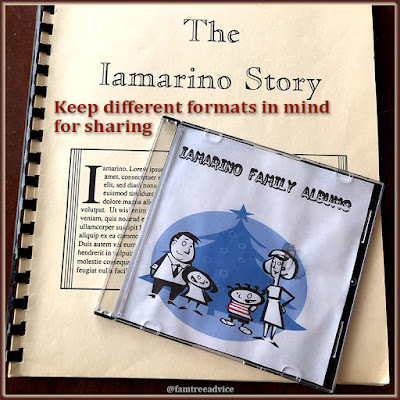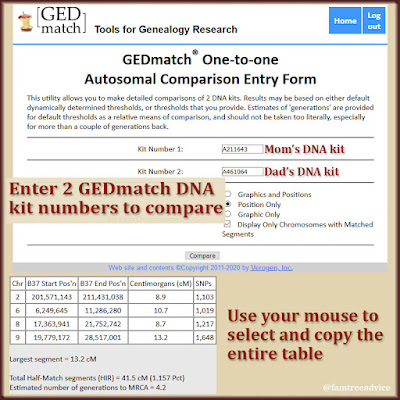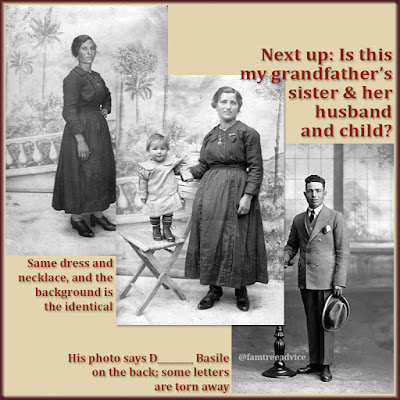I know this much is true: I'll keep adding people and documents to my family tree for the rest of my productive life.
My tree grows each week. I keep my up-to-date family tree on Ancestry.com so distant cousins and DNA matches can keep on tapping into my work.
Ask yourself this: "How many people connected to my tree have any idea what I'm doing?" I know I haven't made many efforts to draw relatives in. I tend to share with those who ask questions.
When a relative wants to see what you've learned, how do you show them? Here are 5 ways you can share your family tree research with your family.
1. Grant them access to your online tree
Seeing the family tree laid out makes more sense than a list of who had which children. The visual format works much better for me. It's immediately clear.
If you can put your family tree on a site like Ancestry.com, you can invite your family to see it. They don't need a subscription to see your tree. I like having the Ancestry app on my phone, too, so I can show it to a cousin when we're together.
2. Print large documents at home
This is a project I began a long time ago. I had an accordion folder that expands and has a slot for each letter of the alphabet. I wanted to fill it with folded-up ship manifests, census sheets, and vital records.
 |
| Create a family-history-to-go collection of full-sized documents. |
I began with my 2 grandfathers. I printed out ship manifests and census forms. At that time, I didn't have their Italian birth records or U.S. marriage or death records. I continued on to my maternal grandmother's parents. They also sailed from Italy to America. I printed their ship manifests and census sheets.
The best part of this project is that I didn't shrink the documents to fit onto a letter-sized sheet of paper. I used my printer to spread the image across several sheets of paper. There were 4 to 6 sheets of paper for each large document.
Then I trimmed the pages, taped them together on the back side, and had nice big documents. I folded the documents down to fit into my accordion folder. Then I gathered all the documents for one person and paper clipped them together. Finally, I put the batch into the slot with the first letter of their last name.
3. Order an oversized family tree
Years ago, my cousin Theresa encouraged me to share our Sarracino family tree.
I told her that branch was far from complete, but she urged me not to wait. So I used Family Tree Maker to make a chart of the descendants of the earliest Sarracino ancestor I had found.
I saved it as a PDF file with very large dimensions. Then I brought the file to a local print shop (Staples or the UPS Store can do the job). They used a plotter to print the tree on a sheet of paper 2 feet wide by 6 feet long.
At home, I laid them on my dining room table and folded them to fit into standard manila envelopes. I had copies for the heads of 40 families. I carried many of them to a Christmas family gathering and sent the rest out by mail.
Everyone seemed amazed. They'd never seen the whole clan laid out that way.
4. Create a book of life
My "Book of Life" article from March 2019 is still drawing lots of readers each week. I wrote about a one-of-a-kind binder I made for my mom's 1st cousin on her milestone birthday.
To create the book, I printed regular page-sized family trees and documents. I split some documents onto 2 pages to make them more legible, and I put them on facing pages in the binder. I slipped each item into a plastic sleeve (I had a few of these), making the pages easy to turn.
 |
| Use common stationery items to create a Book of Life. |
I created "call-outs" by printing important facts on leftover yellow paper. I cut them down to size and placed them on top of images like ship manifests. This is helpful when a document is hard to read. You can use a call-out to make it clear who we're looking at.
The binder had an extra pocket inside its back cover. I slipped in an oversized document, folded down to fit. It also had a clear pocket on the front cover where I put a title page and photo.
5. Create a digital experience
This is one I still need to try. Picture any DVD you may own. The opening screen usually has an image from the movie and a menu of choices to select. What if the image were your ancestors and the menu had different family members to choose?
Each selection might lead to a photo of the ancestor, or their hometown, with some large text to read. That might lead to a view of their ship manifest with a photo of the ship and a closeup of their line(s) on the manifest. Next there might be a photo of their first home and a look at their family on the census. Your time and imagination are the only limits. Plus any learning curve for using various software.
You can distribute this work by CD or place it online for relatives to download. (Remember that most new computers don't have a CD drive.) Or you may want to create this just for yourself. What a great way to preserve your legacy!
 |
| Think outside the box to create something special out of your family tree. |
There is also another way to share your work, and that's in a book you create. See "How to Share Your Family Tree Research with Relatives." Your book may be filled with small family trees, document images, stories, and life stories you write.
I'm grateful to my cousin Theresa who pushed me to print that large family tree so many years ago. Her daughter still has it and cherishes it. Another cousin (my Book of Life recipient) has hers up on a wall.
Which of these projects will you choose for sharing your family tree work with relatives? Start with the one that sounds the easiest and move up from there.













